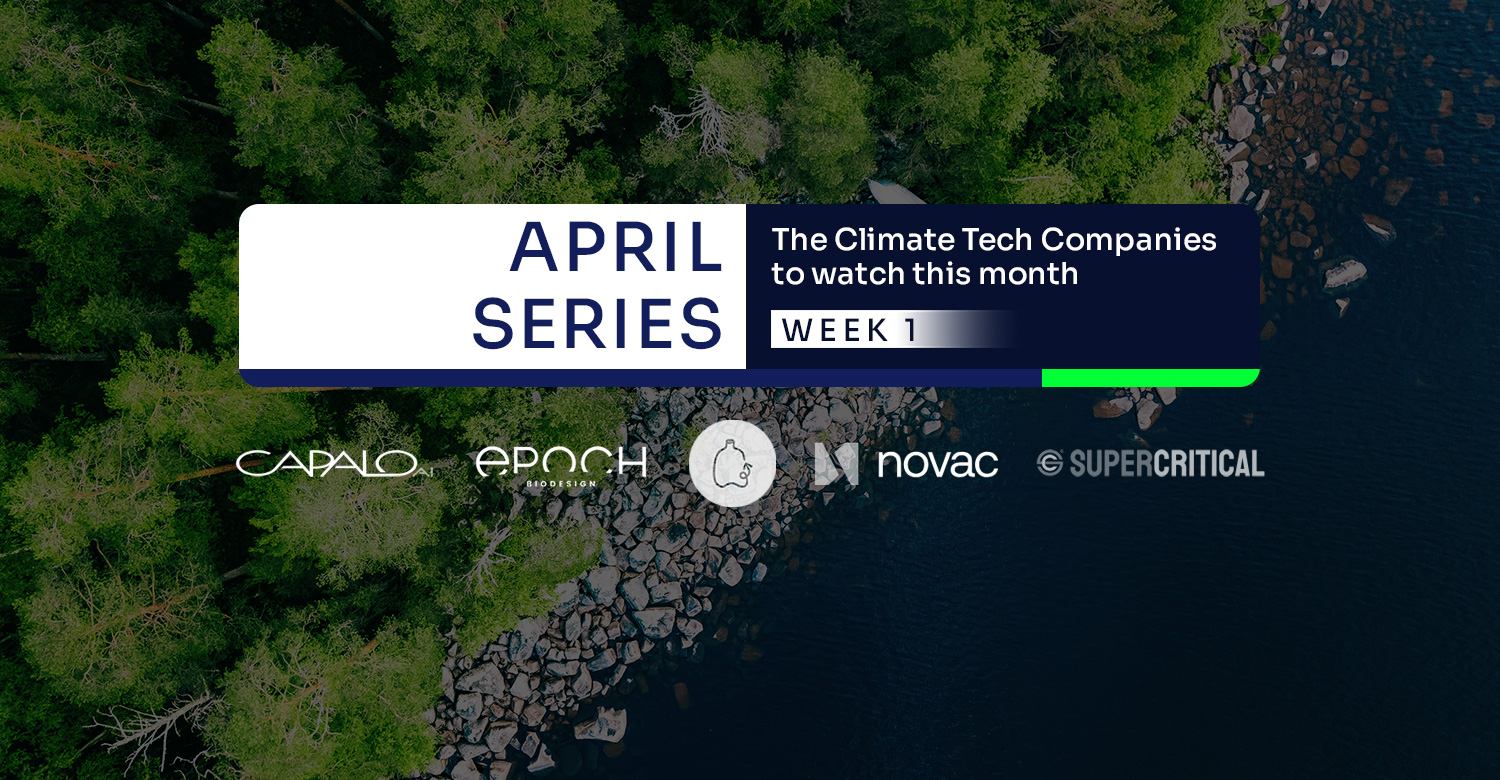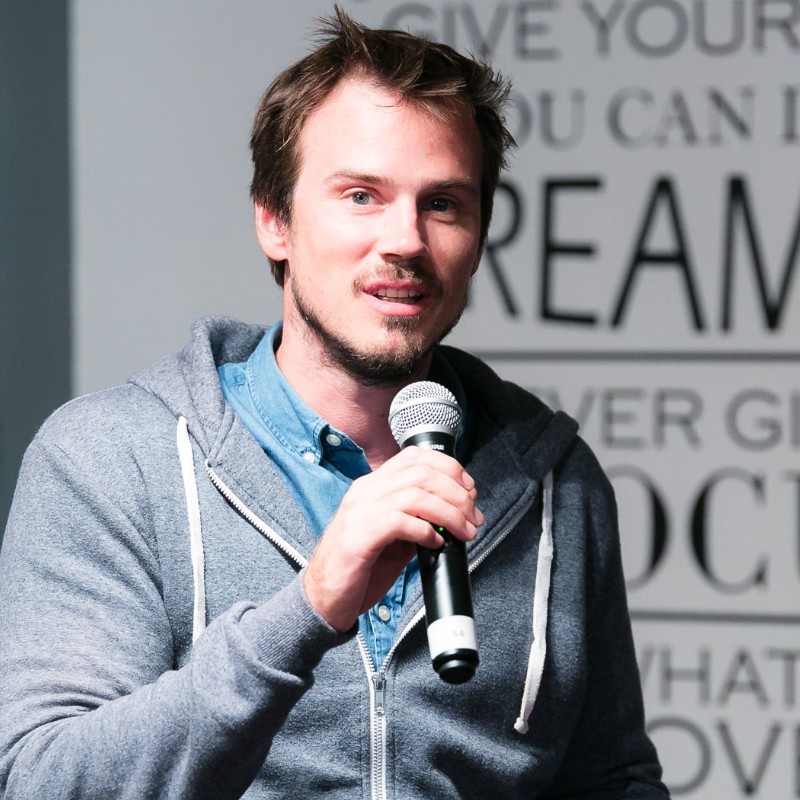Once you have built your startup, it’s time to get out there to network and fundraise like mad. It’s no easy feat. We have a whole page dedicated to resources that can help you build your network how to get started in climate tech. But as you dive into full fundraising mode, it can be easy to get a bit carried away and lose sight of your main objectives. To help you out, we’ve spoken to over 30 climate tech founders to get their 6 tips for fundraising.
Over the course of the last year on the Tech4Climate Podcast, Guillaume, our CEO has been talking to climate tech founders across the sector to hear their stories, understand their perspectives on their vertical, and get their insights into the climate crisis. Each episode culminates with a “My Secret Sauce” Section where founders give their tips for raising capital and growing the business.
Over the course of over 30 episodes, founders have had all sorts of amazing advice that was difficult to boil down to one terse bulleted list. Instead, we have divided their tips into two parts:
- Part 1: Building your startup
- Part 2: Fundraising
We definitely recommend browsing all of the Secret Sauce episodes, but we have also linked to the relevant ones below with a reference to who said which point in parentheses. We hope these tips can be of use and good luck on your journeys!
#1 – Manage your expectations
Fundraising will take A LOT longer than you think and you need to be prepared for that (Karolina Ling-Vannerus). It’s really a full-time job; you need to have one designated person who can step away from the day-to-day running of the business for a few months to go fundraise (Lizzie Horvitz, Raphael Güller). That person will need to be proactive and ready to kiss one hundred frogs (Jon Salazar).
It’s not just about delegating one person to do the job, you need to be prepared to bring in partners, whether it be equity partners in the business or contractors with whom you have different agreements. They won’t always do what you want them to do, but it’s important to remember that imperfect progress is better than no progress at all. Moreover, being able to make compromises to move the ball down the court will also help impress investors; they like to see a founder that is in love with their enterprise, but also aware that they need help (Natan Shahar).
You also need to manage your expectations about how different markets behave differently. For example, the US market moves faster than in Europe; French VCs are more business-minded than German ones (Lubomila Jordanova). Knowing that from the get-go can help you mentally prepare.
Always remember – fundraising is a means to an end for the company to get through the next hurdle. It’s not a competition, but just fuel to help your company get to the next milestone. However, you need to be very specific about what those milestones are. You need a plan A, B, and C and a good idea of what outcome you can get out of capital injection (Maria Fujihara).
Who said it?
#2 - Build your network
Starting anything from scratch is really hard and it will take a lot of time and effort, so you need to get out of your lab and speak with and get advice from anybody who is in the space and willing to listen (Benjamin Ng, Jon Salazar, Sheetal Bahirat). You really have to socially engineer yourself into the right conversations, even on nights and weekends (Ryan Shearman). That should include reaching out to some people you haven’t connected with in years and just asking them for help (Karolina Ling-Vannerus). Only once you have a solid network can you start your fundraising.
Find the right events, events where you can build relationships and you don’t need to pitch (Lisa Gautier). Network and listen to as many VCs as you can by attending workshops, events, acceleration days, etc (Anthony Baker). In the words of Jon Salazar: “90% of my time, I’m looking for deals or gaining exposure – looking everywhere – family offices from Hong Kong to London” (Jon Salazar). It’ll take time and effort, but having a solid network is key.
Take advantage of the community. Climate is a unique space where people are overly keen to help their peers succeed. Use your community to get a feel for the landscape and find other founders who might be able to introduce you to VCs. Founders can be some of the best introductions and can be found by just cold emailing on communities like Work on Climate, My Climate Journey, the Tech4Climate Slack, Discord, Reddit, etc. (for a full list of online communities, see here) (Ryan Shearman, Dimitry Gershenson).
Think outside the box to find who is interested in solving the problem you are trying to solve. Some of the big companies that have those problems might be potential investors. You don’t necessarily need a traditional VC (Sheetal Bahirat).
Remember – “investors don’t invest in dots, they invest in lines. They want to see your trajectory over time. You need to keep giving them dots; all a line is, is many, many dots” (Ryan Shearman).
Who said it?
#52 – Sheetal Bahirat
Founder and CEO,
Hidden Gems Beverage Company
#3 – Build momentum
Fundraising is a science; there is a little bit of an art to it, but it’s mostly just a process, just like sales: you build a funnel and a pipeline of investors, a drip campaign of outreach, and find warm referrals. There are lots of tools, and if applied, anybody can fundraise (Dimitry Gershenson).
To start your fundraising, start with a long list that you have built from your networking and email them asking if they know people that would be interested. Start by saying yes to everything (Lizzie Horvitz). Being remote can really help because you don’t have to get on a plane, but it does mean the time pressure can be weaker if you’re not raising for three weeks and heading home (Mihir Pershad).
Make sure you time it right so that you are reaching out to investors at the right time to create a sense of momentum. You have limited control over how fast people move, but creating a sense that things are moving at a certain pace can really help (Mihir Pershad). One way to help get the timing right is to start fundraising around 9 months before you say you’re starting to fundraise. Get in touch with investors much earlier than you expect. You don’t need to have a deal on the table or a term sheet ready, but it really helps to get them involved with what you are doing, what’s happening in the space, what your hurdles are, and if they can help you at all. Engaging those people early will smooth things out down the line and help build trust (Kelly Hering).
Capitalize on your momentum as it can help build competition between investors. If you have a few angels right off the bat who can vouch for you and can make some introductions, it can help accelerate that momentum. Once you officially declare that you are ready to fundraise, have all your documentation ready and then inform everyone “okay this is happening,” and get the ball rolling (Lubomila Jordanova).
Take as an example Jacqueline van den Ende:
“We never asked anyone to invest in our company. We said that other people wanted to invest. ‘We aren’t thinking of fundraising but now there is someone who is interested, so we’re thinking about it.’ That is how people would call us back.”
Who said it?
#4 – Choose investors wisely
Once you have built a good network, come up with a target list of investors. Only certain investors deal with climate tech, so you need to find the ones that will be interested early on so you don’t waste your time elsewhere (Cody Finke). Check in with yourself as to what investors you need in terms of money, reputation, and values (Karolina Ling-Vannerus).
Make sure that you are ready to talk with investors. Approach preemptive talks very delicately and protect your own time in the process; these can be a slippery slope and a lot of work you didn’t necessarily plan for, so you need to be organized and talk to as many people as you can while also having a deadline and making sure you don’t string it out too long (Zach Stein, Maria Fujihara).
Be wary of taking money from just anybody; choose your investors wisely. It’s great to get buzz around you, but prioritize those meetings that are with investors that align with your values (Karolina Ling-Vannerus). You can get money from a number of different sources, but it might not be the kind of money that you need. For example, you’ll want an investor that can help you as well as give you cash, and whose mission aligns with yours. If that is not the case, look elsewhere. In the meantime, bootstrapping allows you to build value and increase your future returns (Chris Stern, Kelly Hering, Marcus Lovell-Smith).
It’s also important to know when to stop. You can easily get into a wormhole and keep going because you have momentum, but sometimes you just need to know when to shut down your fundraising round (Raphael Güller).
Who said it?
#5 – Nurture relationships
Finding investors is largely about building relationships. Start small by getting your name out there and making them remember you by making sure you always have a follow-up phone call (Kelly Hering). Present yourself, but don’t pitch; you will never close the deal on the first conversation, so focus on building the relationship first (Lisa Gautier).
Have fun and be fun. Laugh a bit about what you don’t know and just have fun with it; you don’t want boring investors either. Have a bit of a chat and have some fun beforehand. It helps balance what can be an exhausting day of pitching (Karolina Ling-Vannerus). Getting to know your investors helps you understand where investors’ motivations lie, who are the decision-makers, how to get to them, and who at the firm can champion you (Kelly Hering). Getting a VC is like getting a romantic partner (Raphael Güller), it’s all about the relationship. It goes without saying, therefore, that there is no point in forcing yourself to be a person you are not. You will be working a lot with these investors, so be yourself and be transparent; it helps to build trust (Bergur Sigfússon; Raphael Güller).
Never neglect a relationship (Lisa Gautier). Once you meet someone who is interested, keep them updated. In the end, when you’re looking for investors, you are competing with other startups, and the only way you can get a VC’s attention is if you have someone inside advocating for you through a relationship you have worked hard to build (Benjamin Ng).
Benjamin Ng learned this firsthand:
“I met someone who said we weren’t ready for an accelerator, but we kept him updated and when we were ready, we were fast-tracked through the application.”
Who said it?
#6 – Find an accelerator
Accelerators can be very helpful because they teach you to focus on the things that will show investors the value of your company down the line. They make you realize the importance of traction and that sometimes commercial value is more important than building the product. In the words of William Loopesko:
“Techstars forced us to step back, not build anything, and go out and talk to our customers to listen to what they were saying and use that to build a new release. That really helped accelerate our growth.”
Accelerators are also really good at getting you connected with investors, founders, and talent you may not have (Maria Fujihara). They also teach you what investors want to hear. One big reason to join an accelerator is to get to know investors (Mihir Pershad).
A few tips for how to get into an accelerator:
- On the application, always start by answering the question first. Don’t tell the story first. Instead, put the answer at the very beginning and then put the rest below that (Josh Santos).
- For the interview process, come prepared with numbers. The more you can speak about your market opportunity and potential, the better (Josh Santos).
- But don’t despair – if you don’t get in, you can always apply again. If you get rejected, it doesn’t mean you won’t ever get in. Accelerators are all about seeing growth. Use the same tips we recommended above about building your network: build relationships, follow up, and show your growth (William Loopesko).
Who said it?
Want to hear more tips from climate tech investors and founders?





























